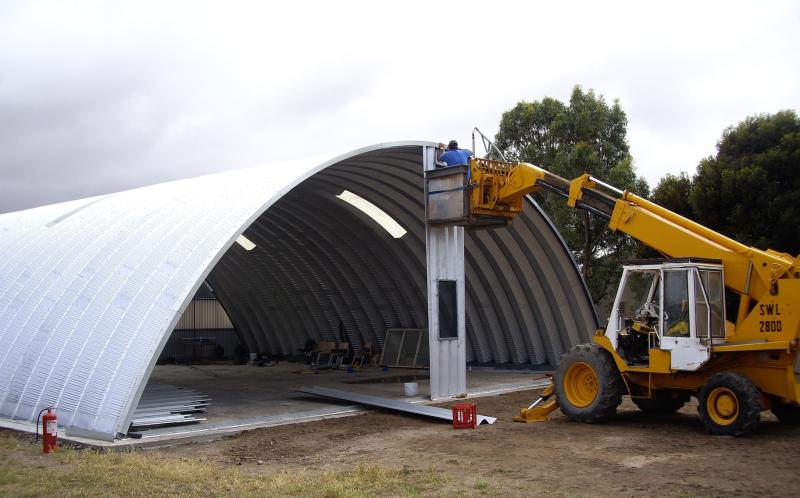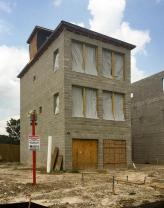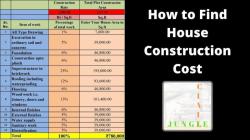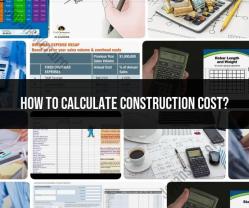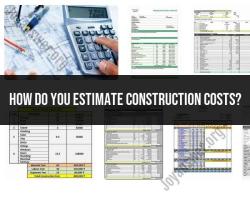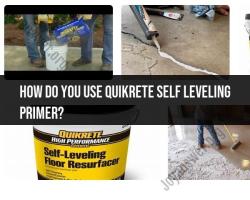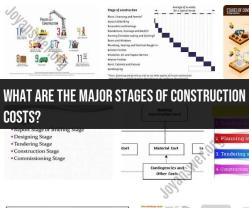Are steel buildings easy to assemble?
Yes, steel buildings are generally known for their ease of assembly, and the construction process is often faster compared to traditional building methods. Several factors contribute to the ease of assembly with steel buildings:
Pre-Engineered Components:
- Steel buildings are often designed as pre-engineered metal buildings (PEMBs), where components are manufactured to precise specifications before arriving at the construction site. This includes columns, beams, purlins, and other structural elements.
Precision and Consistency:
- The manufacturing process for steel components ensures high precision and consistency. This contributes to straightforward assembly on-site, as the components are designed to fit together seamlessly.
Bolted Connections:
- Many steel buildings use bolted connections rather than welding. Bolting components together is a faster and often more straightforward process, requiring fewer specialized skills compared to welding.
Detailed Construction Drawings:
- Steel building manufacturers provide detailed construction drawings and instructions specific to the project. These drawings guide the assembly process and help ensure that each component is correctly placed.
Modular Design:
- Steel buildings often have a modular design, with repeating sections that can be easily replicated. This modularity simplifies the construction process and allows for efficient assembly.
Lightweight Materials:
- While steel is strong and durable, it is also relatively lightweight compared to some other construction materials. This characteristic facilitates easier handling and assembly of components.
Minimal On-Site Fabrication:
- Since many steel building components are fabricated off-site, there is minimal need for on-site fabrication. This reduces the complexity of the construction process and accelerates the overall timeline.
Reduced Labor Requirements:
- The straightforward assembly and precision of steel components can reduce the labor requirements for construction. This can contribute to cost savings and a quicker construction timeline.
Efficient Construction Crews:
- Construction crews experienced in working with steel buildings can efficiently assemble the structure, taking advantage of the streamlined construction process.
Speed of Construction:
- Steel buildings are known for their rapid construction. The ease of assembly, combined with efficient construction practices, allows for quicker project completion compared to some traditional construction methods.
It's important to note that the ease of assembly can also depend on factors such as the complexity of the design, the size of the building, and the level of expertise of the construction team. While steel buildings are generally considered easy to assemble, it's advisable to work with experienced professionals who are familiar with the specific requirements of steel construction. Additionally, adherence to the manufacturer's instructions and local building codes is crucial for a successful and safe assembly process.
Assembling a steel building is generally a straightforward process, but it is important to follow the manufacturer's instructions carefully and to have the necessary tools and equipment on hand. Here is a general overview of the typical steps involved in assembling a steel building:
Preparation
Site Preparation: Clear the building site of any debris or vegetation, and ensure the ground is level and stable. If necessary, grade the site to create a proper foundation for the building.
Foundation Layout: Lay out the foundation according to the manufacturer's blueprints. This may involve setting anchor bolts or preparing a concrete slab.
Material Organization: Organize the steel building components and materials in a clear and accessible manner. This will help streamline the assembly process and prevent delays.
Assembly
Column Erection: Start by erecting the main structural columns of the building. Use a plumb bob or level to ensure the columns are vertical. Secure the columns to the foundation using anchor bolts or other appropriate fasteners.
Beam Installation: Install the beams that connect the columns and form the framework of the building. Use cranes or other lifting equipment as needed. Secure the beams to the columns using bolts or welding.
Purlin and Girder Installation: Install the purlins or girders that support the roof trusses or rafters. Secure the purlins or girders to the beams using bolts or welding.
Roof Framing: Install the roof trusses or rafters that form the roof structure. Secure the trusses or rafters to the purlins or girders using bolts or welding.
Roof Sheathing and Roofing: Install the roof sheathing material, such as plywood or oriented strand board (OSB), over the roof framing. Apply the roofing material, such as shingles or metal panels, following the manufacturer's instructions.
Wall Framing and Sheathing: Install the wall framing, which typically consists of studs and plates, to create the walls of the building. Secure the wall framing to the columns and beams using bolts or welding. Install the wall sheathing material, such as plywood or OSB, over the wall framing.
Doors and Windows: Install the doors and windows according to the manufacturer's instructions. Ensure the doors and windows are properly aligned and sealed to prevent air leaks.
Interior and Exterior Finishing: If required, complete any interior finishing, such as drywall, flooring, electrical wiring, and plumbing. Apply exterior finishes, such as siding, paint, or landscaping, as desired.
Tools and Equipment Required
The specific tools and equipment required for assembling a steel building will vary depending on the size and complexity of the structure. However, some common tools and equipment that may be needed include:
- Cranes or lifting equipment
- Wrenches and sockets
- Impact wrenches
- Levels and plumb bobs
- Welding equipment (if required)
- Safety equipment, such as hard hats, gloves, and safety glasses
Assembly Duration
The time it takes to assemble a standard-sized steel building depends on the size and complexity of the structure, the experience of the assembly team, and the availability of tools and equipment. In general, a standard-sized steel building can be assembled in a few days to a week. However, larger or more complex buildings may require several weeks or even months to complete.
It is important to note that assembling a steel building can be a hazardous task, and it is always recommended to have experienced professionals handle the construction process. Improper assembly can lead to structural instability, safety hazards, and potential damage to the building. Consulting with experienced steel building contractors and engineers can ensure a safe and efficient assembly process.
